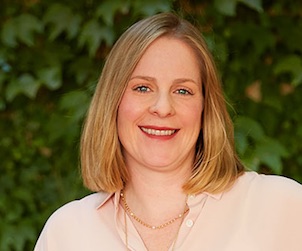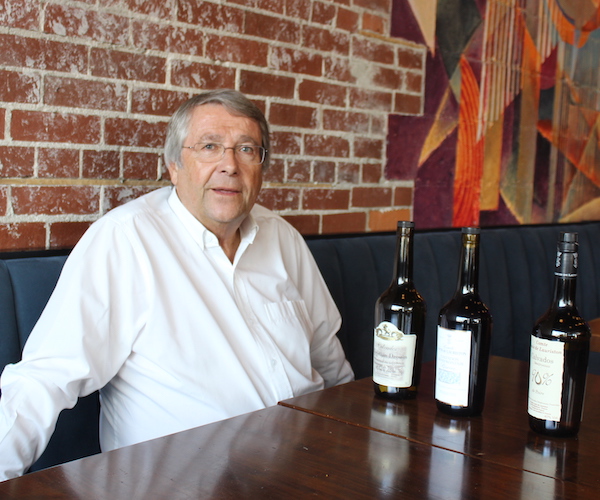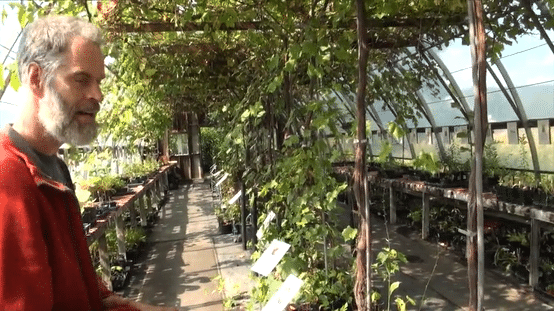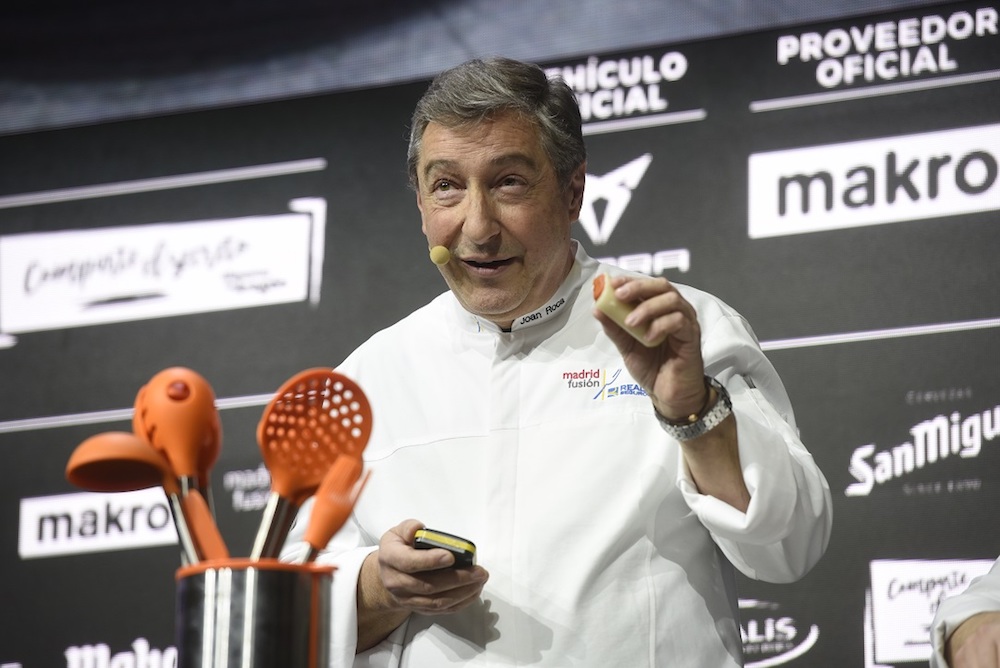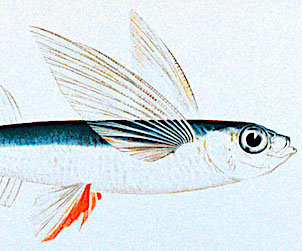Malcolm Jolley tastes and talks with Robert Mondavi’s Megan Schofield.

Megan Schofield (at right in blue) is part of the Robert Mondavi Winery’s oenoligical team along with Joe Harden and Director of Winemaking Genevieve Janssens.
Megan Schofield is a winemaker, responsible for white wines, at Napa’s famous Robert Mondavi Winery. She was in town recently as part of an LCBO event called Connected by the Vine, Women in Wine. It was something of a homecoming for Schofield who was born in Toronto, grew up in nearby Niagara and graduated from Brock University’s Onoelogy and Viticulture program. Schofield led me and small group of local wine writers through a tasting of some of the wines they make, and then we sat down for a quick interview largely on the topic that brought her to Toronto: women in wine.
The Wines…
First up was the 2016 Napa Valley Fumé Blanc a straight forward, clean and finessed New World take on Sauvignon Blanc, full of peaches and stone fruit. Then a quick lift-off to the 2014 Reserve Fumé Blanc, Napa Valley, To Kalon Vineyard. To Kalon is the vineyard right by the iconic Mondavi winery building, and it’s Greek for “the beautiful’, which also is as good a term as any for the description of this wine. Where the 2016 Napa Valley Fumé had depth, the 2014 To Kalon had profundity. Refined and elegant, perfectly balanced with apricots and white peaches. Schofield told us both wines have a touch of Semillon in them, and I wondered if they didn’t point more to the Gironde than the Loire. The Napa Valley Fumé will be released to Vintages in November for somewhere between $20-25, and the To Kalon is available by private order through LCBO.com for about $60. (For a set of complicated reasons, not all explained to this reporter, the Mondavi wines are, if one takes into account the current exchange rate with the US dollar, comparatively cheaper in Ontario than at the cellar door.)
We tasted two other white wines from Schofield’s works, starting with the 2015 Carneros Reserve Chardonnay, a wine that was one of the first she worked on when she joined Robert Mondavi that year, after seven years at Simi. My tasting notes for this wine begin with the words, “Holy cow, so much going on here.” Which I beleieve indicates complexity. It’s a fruit salad in a glass, in the best possible way, with citrus and tropical fruits all underlayed with a creamy richness and just a touch of mineral salt seasoning. I often wonder how many thousands of rows of Chardonnay were planted around the world in the 1980’s in the hopes of emulating Robert Mondavi’s success. If the wines the would-be Mondavi’s, from Australia to Italy, tasted before they set about grafting were anything like the 2015 Carneros, then I can see why they did it. This is a well bred white, a James Bond wine: refined and mannered, but still very much full of action. It was good.
After the Carneros Chardonnay we tasted reds, which I will report on another time, then came back to the last of Megan Schofield’s whites: the 2015 Moscato D’Oro. Californian answer to Moscato d’Asti, the D’Oro was a summer afternoon in a glass, smelling of roses and peonies and pulling soft citrus notes on the palate. This wine wants strawberries and cream, badly.
After the tasting, I pulled Schofield aside for a quick chat. Having established what happens int he glass when Genevieve Janssens’ team makes wine, I spoke to her instead about her career, with a focus on her role as a woman in wine. While schofiled interned in Niagara as a student at Brock, she took a trip to California after graduating to meet a friend and somehow never came back…
This interview has been edited for length, style and clarity.
Good Food Revolution: Thank you for a lovely tasting. As we were trying the wines, you mentioned that you began your career as a student intern at Inniskillin, one of two ladies hired on to help the legendary Karl Kaiser. Were you the first women to work at the winery?
Megan Schofield: I don’t know. We might have been. Sitting here right now, I can’t think of anyone who was before us…
Good Food Revolution: I guess my real point is that there weren’t a lot of women winemakers around when you graduated from Brock in 2000?
Megan Schofield: Sure. In the cellar, we were definitely the only two ladies.
Good Food Revolution: Now, of course, there’s some change since your boss [Genevieve Janssens] is a lady…
Megan Schofield: A legend.
Good Food Revolution: OK, so tell me about what’s happened in the last two decades and what’s going on with women and wine.
Megan Schofield: I get asked questions about women and wine frequently because it is still a male dominated industry. I don’t know the exact numbers, but I’ve heard that something like 20% of winemakers are women, which is still pretty low. Except for the Inniskillin thing, where I was basically just a labourer, maybe a semi-skilled labourer, I don’t think that I have been blazing trails. I think more of the women who came before me like Zelma Long and MaryAnn Graf: the women of the 70s are the ones who did a lot of the heavy lifting and I follow in their footsteps. And I feel like I have been very lucky. As a winemaker I work for a very strong woman and previous to this my boss at Simi was a woman, and before that I worked at Beringer and Laurie Hook was there, who was someone I completely looked up to.
Good Food Revolution: Was this on purpose? Did you seek out women winemakers?
Megan Schofield: No. I don’t know how I did it. I was at Simi for a long time and was honoured to be part of that heritage. Isabelle Simi, who took over the winery in 1904 is an inspiration. On a day to day basis, I don’t feel like I am breaking any ground, but I feel that we still have a lot of work to do. The big next thing is the glass ceiling: how many women are at he executive level? But you know, when I read that statistic, of only 20% of winemakers were women, I thought at first it was quite low, because I know so many women winemakers in Napa and Sonoma, and Canada. I guess I choose to surround myself with women who are winemakers, if you know what I mean?
Good Food Revolution: What about the you’re interviewing prospective cellar rats? Are you getting a 50/50 male to female distribution?
Megan Schofield: Well, I believe that last year there were more female than male graduates from the winemaking program at Brock for the first time. I’m not a 100% – maybe it was the year before, but that’s a big deal. On our production team, there are a few women, but I would say it’s about 30%. There’s a little bit of segregation. There’s definitely jobs that our female labourers like to do versus the men. These are the stereotypes I would love to figure out how to change. For instance, when you’re hand sorting fruit, it’s typically always the women on the sorting line. We’ve tried to put men on the sorting line, but they don’t want to do it.
Good Food Revolution: I guess that’s a cultural thing. It’s interesting.
Megan Schofield: The more women who rise to leadership roles the better. I think of myself: when I was figuring out what I wanted to be. I knew I wanted to be winemaker so it was a question of finding a strong person that I wanted to be. Along the way I made choices that would get me to that person.
Good Food Revolution: Like who? You have to name names!
Megan Schofield: Zelma Long. I remember as a lab tech reading an article where her name came up and getting her on my radar. So when I worked at Simi, just having her legacy there was a big deal. She’s a very strong woman and her wines are fabulous. The people who have worked for her over the years speak very highly of her, her reputation is great. And her knowledge is incredible. I have tasted with her and I am sure she has no idea how much admiration I have for her because I never told her. But she’s someone who I have always held up here [raises hand above head] and if I could ever rise to her level, I would be very happy.
And my boss, Genevieve Janssens, is a legend. She’s such an amazing source of knowledge and her wines are incredible. There is nobody who works harder than her to help us make these wines. She’s amazing.
The Robert Mondavi Winery keeps a website at robertmondaviwinery.com.

